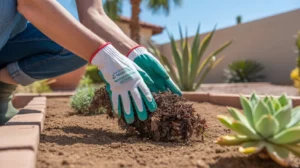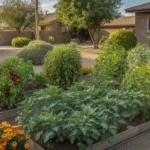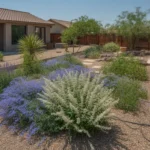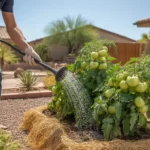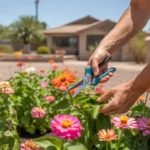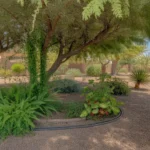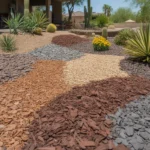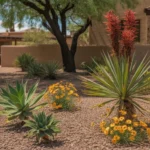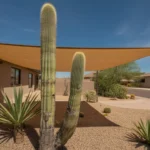As the weather warms and days grow longer, spring is the perfect time to give your Chandler garden some much-needed TLC. With a bit of planning and elbow grease, you can revive your backyard oasis and set the stage for a lush, productive growing season. Here’s a roundup of essential spring garden care tips to get your yard in tip-top shape.
Clear Out Winter Debris
The first step in spring garden prep is a thorough cleanup. Grab your gloves, pruners, and a few yard waste bags to remove any lingering signs of winter. Rake up fallen leaves, twigs, and spent foliage that can harbor pests and disease. Don’t forget to clear debris from pathways, patios, and garden beds.
As you clean, keep an eye out for perennials that are starting to emerge. Work carefully around these tender shoots, and consider marking them with small flags to avoid accidentally stepping on or damaging the new growth. If you spot any dead, damaged, or diseased branches on trees and shrubs, prune them out now to encourage healthy new growth.
“A good spring cleaning sets the tone for the whole growing season,” notes Tina Delgado, a Chandler landscaping contractor. “Removing old debris improves air circulation, deters pests, and gives you a clean slate to work with as you plan your spring planting.”
Prune and Shape Trees and Shrubs
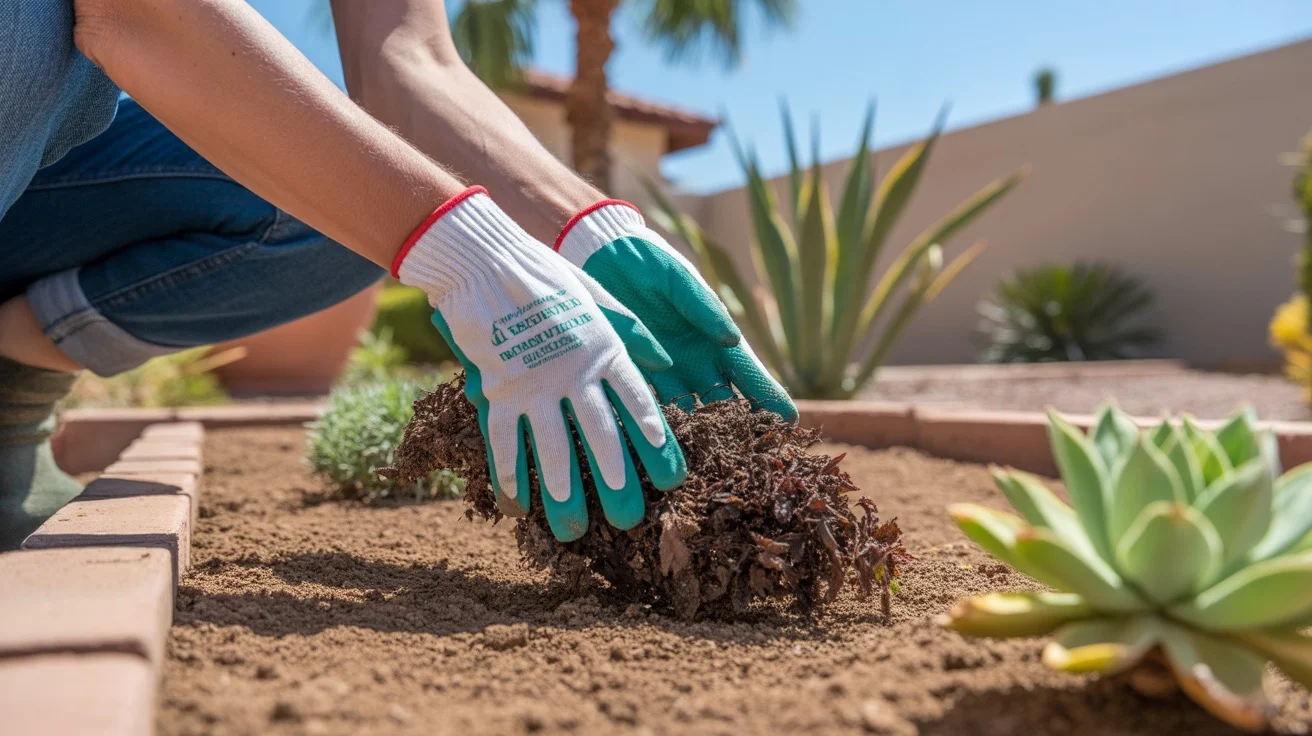
Late winter to early spring, before new growth emerges, is the ideal window for pruning many trees and shrubs. Shaping plants while they’re still dormant helps promote strong branch structure, maintains size, and encourages fuller, healthier growth.
The specifics of how and what to prune vary by plant type. As a general rule, remove any dead, diseased, or crossing branches first. Then selectively thin out crowded areas to improve air circulation and light penetration. Avoid shearing shrubs into tight shapes, which can lead to a dense outer layer of foliage and a hollow, twiggy interior.
“When it comes to pruning, less is often more,” advises a Gilbert arborist. “Start with a light touch and step back frequently to assess your work. You can always remove more, but you can’t put branches back.”
Nourish Soil with Compost and Amendments
Healthy soil is the foundation of a thriving garden. After a long winter, your soil may be compacted, depleted of nutrients, or in need of a boost. Spring is the perfect time to nourish garden beds with a layer of organic compost, aged manure, or other nutrient-rich amendments.
Spread a 2- to 4-inch layer of compost over beds, then gently work it into the top few inches of soil using a digging fork or cultivator. As it breaks down, compost will improve soil structure, increase moisture retention, and provide a slow-release source of essential plant nutrients.
If a soil test reveals any nutrient deficiencies or pH imbalances, address those now as well. Your local cooperative extension office or garden center can provide specific amendment recommendations based on your soil type and test results.
Refresh Mulch in Beds and Borders
A fresh layer of organic mulch is the finishing touch for your cleaned-up, nourished garden beds. Mulch helps retain soil moisture, suppress weeds, and moderate soil temperature—all key benefits in Chandler’s hot, dry climate. It also gives beds a tidy, manicured look.
Opt for a natural, locally sourced mulch, such as bark chips, shredded leaves, or straw, and aim for a depth of 3 to 4 inches. Avoid piling mulch right up against plant stems or tree trunks, which can trap moisture and lead to rot. Instead, leave a few inches of breathing room around the base of each plant.
“One of the best investments you can make in your Chandler garden is a thick layer of organic mulch,” shares a Queen Creek landscaper. “It conserves water, saves time weeding, and makes everything look more polished. Plus, as it breaks down, it continues to nourish your soil.”
Divide and Transplant Crowded Perennials
Spring is a great time to divide mature perennials that have outgrown their space or started to decline in vigor. Candidates for division include daylilies, hostas, ornamental grasses, and many other clumping perennials.
To divide, carefully dig up the entire plant, roots and all. Gently loosen or tease apart the root ball, then slice through the crown with a sharp spade or knife to separate it into smaller sections. Each division should have a healthy portion of roots and a few shoots.
Replant the divisions immediately, either back in the original spot or in new locations. Water well, and keep the soil evenly moist as they reestablish. Dividing not only rejuvenates older plants but also gives you new ones to expand your plantings or share with fellow gardeners.
Plant Heat-Loving Vegetables and Herbs
In Chandler, spring is prime time for planting warm-season vegetables and herbs that thrive in the heat. Some top choices for a desert-friendly kitchen garden include tomatoes, peppers, eggplant, squash, corn, basil, and rosemary.
Wait until all danger of frost has passed and soil has warmed to plant these heat lovers. Amend beds with plenty of compost, and consider installing a drip irrigation system to provide consistent moisture. Mulch well to help retain soil moisture and keep roots cool as temperatures climb.
“Spring is a bountiful time in the edible garden,” shares a Chandler horticulturist. “With our warm springs, you can get a jump start on summer favorites like tomatoes and peppers. Just be sure to choose varieties well-adapted to the desert heat and keep them well-watered as they get established.”
Set Up Irrigation and Water Wisely
As spring transitions to summer, efficient irrigation becomes increasingly important in Chandler’s arid climate. If you haven’t already, now is the time to set up and test your irrigation system to ensure it’s in good working order for the growing season ahead.
Check for leaks, clogs, or damaged emitters, and make any necessary repairs. Adjust watering schedules as needed to provide adequate moisture for actively growing plants. Aim to water deeply and infrequently, delivering moisture to the entire root zone while allowing soil to dry slightly between waterings.
Consider upgrading to a smart irrigation controller that automatically adjusts watering based on local weather conditions. These high-tech systems can help reduce water waste and keep your garden healthy without constant manual adjustments.
Monitor for Pests and Disease
As your garden springs back to life, keep a watchful eye out for any signs of pests or disease. Common spring issues in Chandler include aphids, whiteflies, thrips, and powdery mildew.
Regularly inspect plants, paying close attention to the undersides of leaves where many pests hide. If you spot any unwanted visitors, first try removing them by hand or with a strong spray of water. For more persistent problems, consider spot-treating with an insecticidal soap or neem oil.
The best defense against pests and disease is a healthy, well-maintained garden. By providing proper irrigation, nutrition, and airflow, you’ll help your plants fend off attackers naturally. Encourage beneficial insects like ladybugs and lacewings, which prey on common garden pests.
With these spring garden care tips in hand, you’re well on your way to a beautiful, bountiful oasis this growing season. A little extra effort now will pay off in healthier plants, fewer maintenance headaches, and a more enjoyable outdoor space all summer long. So roll up your sleeves, grab your tools, and get ready to revive your Chandler garden for another spectacular desert spring.

